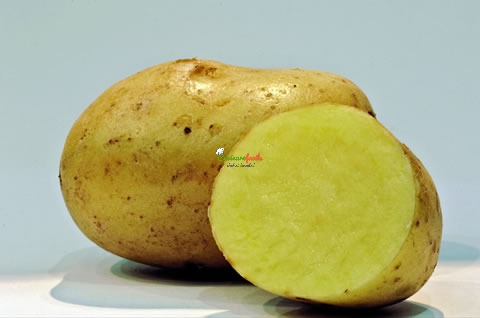For beginners and experts alike, F&W offers a guide to more than 40 essential ingredients for making Indian recipes. Here are Indian cooking’s key dry goods, spices, dairy products and more.
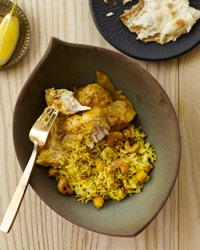
A fragrant, long grain rice cultivated in India, characterized by grains that become fluffy and do not stick together when cooked.
Recipe to Try: Lemon Cashew Rice
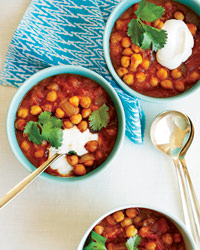
A high-protein, high-fiber legume that is a staple in Indian cuisine, particularly in vegetarian dishes. The Desi chickpea, smaller and darker than its more familiar cousin, the Kabuli chickpea, is the most commonly consumed variety in India.
Recipe to Try: Chickpeas in Spicy Tomato Gravy
A finely-ground, whole grain flour made from durum wheat. The high gluten content produces strong, elastic doughs that are able to be rolled out very thinly. Used in Indian cuisine in the making of chapati, roti and naan flatbreads, among other uses. Also called atta flour.
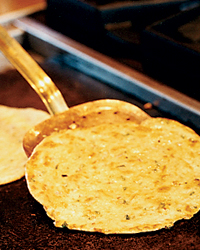
Called besan in Bengali, this high-protein, gluten-free flour made by grinding dried roasted or raw chickpeas is a staple in Indian cooking. It is used in many applications, including in crepes, pancakes and in batter for frying.
Recipe to Try: Chickpea-Chile Flatbreads
Made from unrefined palm sugar or cane sugar and sold in hard discs or chunks, jaggery is the primary sweetener used in Indian cooking. It is medium to dark brown in color and has a somewhat smoky, caramelized flavor. It is slightly less sweet than the dark brown sugar sold in the US, so if substituting, use a bit less brown sugar than the amount of jaggery called for in the recipe. Also called gur.
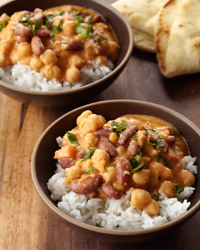
A large, dark red legume, called rajma in Hindi and Punjabi, that is used frequently in the vegetarian cuisine of Northern India and elsewhere.
Recipe to Try: Three-Bean Dal
A legume native to India, the mung or moong bean is green when left whole. In Indian cuisine, it’s most commonly hulled and split, revealing a yellow interior. In this form, it is used to make dal.
Recipe to Try: Mung-Bean-and-Rice Pilaf (Hare Moong Ki Kichari)
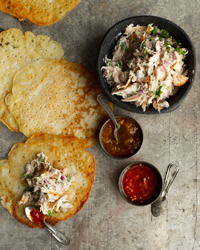
Finely milled white rice (brown rice flour is rarely used in Indian cuisine) is used as a thickener for soups and sauces, to add lightness to doughs and crispiness to batters for frying. Used in the making of dosas (fermented crepes), idli (savory fermented steamed cakes), and appam (rice flour pancakes). Also called ground rice or rice powder.
Recipe to Try: Roast Chicken Dosas
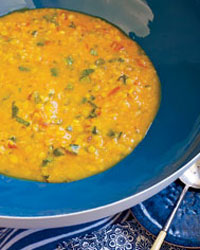
Dried, hulled and spilt legumes and seeds (often lentils), called dal, are used extensively throughout Indian cuisine, most notably in the thick stew also called dal.
Recipe to Try: Buttery Pigeon Pea Dal (Mitti Handi Dal)
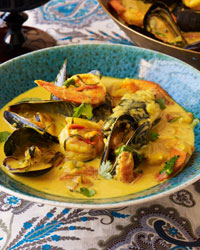
Made by pressing and straining coconut meat; for thin coconut milk, the meat is soaked in water and pressed once or twice more. Used extensively in Indian stews and curries, as well as in other applications, both sweet and savory—particularly in the Kerala cuisine of the Southwestern coast.
Recipe to Try: Curried Coconut-Seafood Soup (Seafood Rassa)
Called gingelly or til oil; made by grinding and pressing sesame seeds, sesame oil is commonly used as a cooking oil in Southern India. Can be either raw (which is light in color, mild in flavor and is stable at high temperatures, making it good for high-heat cooking or frying) or toasted (which is darker in color and much more aromatic, with a strong nutty flavor, making it best for stir-frying, seasoning or use in marinades).
Recipe to Try: Rice Pilaf with Pistachios and Prunes
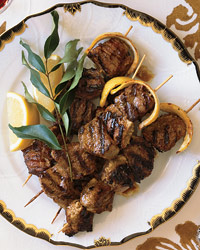
Called dahi in Hindi, Indian yogurt, made from cultured cow’s or water buffalo’s milk, is high in butterfat and very thick. It is eaten plain or sweetened and is used extensively in curries and as a tenderizer in marinades. Two popular applications are the herbed and spiced condiment, raita, and the sweet or savory beverage, lassi.
Recipe to Try: Yogurt-Marinated Lamb Kebabs With Lemon Butter
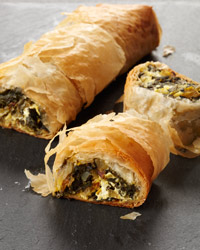
The small, round seed, of the plant commonly called bishop’s weed, similar in appearance to celery seeds. Imparts a flavor comparable to thyme, but more intense and peppery. Used primarily in North Indian cooking, particularly in vegetable and fish dishes.
Recipe to Try: Chard and Goat Cheese Strudel with Indian Flavors
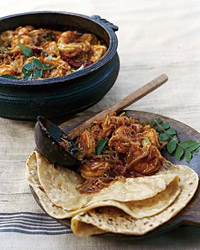
The seed from an aromatic herb in the parsley family. Has distinctive licorice flavor and is often used interchangeably with the fennel seed in Indian cooking. Like fennel seeds, they are often chewed at the end of the meal to aid digestion and freshen the breath.
Recipe to Try: Shrimp Masala
A dried gum resin made from sap found in the stem of several varieties of Ferula, a plant related to fennel. It has a pungent, sulfuric odor, but when cooked, imparts a mellow, somewhat garlicky flavor. Often found in legume dishes because of its digestive properties. Sold in lump or powder form.
Recipe to Try: Mixed Dhal Vada

The aromatic leaves of the sweet laurel bush, not traditional in Indian cooking but often recommended as an easily accessible substitute for the more tender, subtler leaves of the Cassia tree, which are used frequently in Bengali and Eastern Indian cooking, particularly in aromatic rice dishes.
Recipe to Try: Poached Salmon with Cucumber Raita
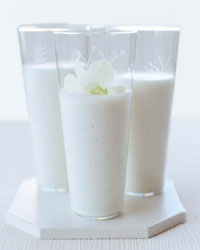
There are 2 varieties of cardamom commonly used in Indian cooking: green (choti elaichi) and brown (badi elchi or moti elaichi). Green cardamom is the seedpod from the plant Elettaria cardamomum; it has a subtle, zesty, spicy flavor and is used in more delicately flavored curries, pilaus and sweet dishes. Ground, the seeds have a more intense flavor and are used in the spice blend, garam masala.
Brown cardamom is the seedpod from the Ammomum aromaticum plant; it is a large, brownish-black pod and is more intense and astringent than green cardamom; used in strongly aromatic curries and pilaus.
Recipe to Try: Cardamom Lassi

One of the most extensively used herbs in India, the pungent, aromatic leaves of the coriander plant (Coriandrum sativum) can be both a flavorful, essential ingredient and a colorful garnish.
Recipe to Try: Peach, Currant and Cilantro Chutney

The fragrant, sweet and spicy rolled and dried inner bark of the Cinnamomum zeylanicum tree. Used as a whole stick for infusion or ground as a seasoning to flavor both sweet and savory dishes, particularly in Moghul cooking. Often sold interchangeably with the rolled and dried inner bark of the cassia tree, which has a similar though less subtle flavor. (The “cinnamon” sold in the United States is nearly always, in fact, cassia.)
Recipe to Try: Indian Spiced Chicken and Spinach
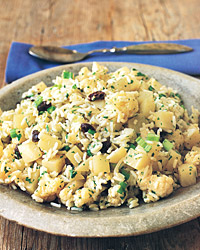
The nail-shaped, dried, unopened flower bud of an evergreen tree native to the Spice Islands of Indonesia. Used whole for infusion or ground as a seasoning, cloves’ powerful, distinctive flavor is used in sweet and savory dishes, especially rice and meat or rice and bean dishes. Ground clove is an essential ingredient in garam masala. The buds are sometimes chewed after meals to freshen the breath.
Recipe to Try: Basmati Rice Salad with Cauliflower and Potatoes
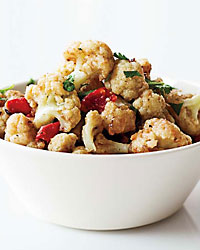
The round, tan seeds of the coriander plant (Coriandrum sativum). Coriander seeds have an earthy, almost floral fragrance and flavor, and are used whole, crushed or ground, often in conjunction with cumin. One of the most extensively used spices in Indian cooking, especially in Moghul cuisine.
Recipe to Try: Cauliflower Curry
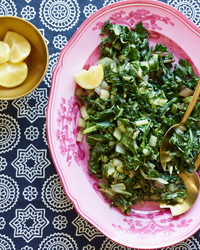
Small, elongated, ridged seeds from the Cuminum cyminum plant. There are two varieties: white and black. The white are more common and have a slightly more delicate, though still pungent, flavor; they are often used in dals, raitas, rice and vegetable dishes. The black are more complex and musky, and are primarily used to flavor more intense, meat-based dishes, particularly in Moghul cuisine. The seeds are almost always toasted before being used whole, crushed or ground.
Recipe to Try: Swiss Chard with Ginger and Cumin

Sold dried or fresh (preferable), the aromatic, citrusy leaves of the shrub Murraya koenigii are used extensively in Southern and Western Indian cooking. They are often tossed in hot oil at the beginning of the cooking process, releasing their intense perfume. They can also be added to a simmering dish towards the end of cooking to delicately flavor the sauce. The curry leaf is sometimes, but not always, an ingredient in curry powder.
Recipe to Try: Keralan Vegetable Stew
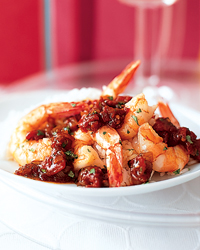
A term referring to any of a number of spice blends incorporating common Indian spices such as cumin, coriander, cinnamon and clove. At best, curry powder can refer to traditional blends like garam masala or sambhar powder; however, the term often is applied to inferior, generic, mass-produced and marketed blends.
Recipe to Try: Shrimp in Pomegranate Curry
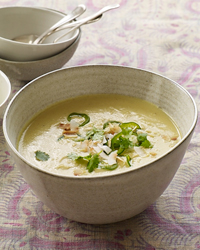
Long, ridged, light-green seeds from the Foeniculum vulgare plant. They have a strong floral, licorice flavor, and are often used interchangeably with anise seeds in Indian cooking. Like anise seeds, they are often chewed at the end of the meal to aid digestion and freshen the breath.
Recipe to Try: Curried Cauliflower Soup with Coconut and Chiles
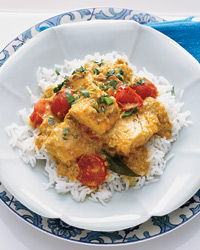
Technically legumes, these brownish-yellow, hard, rectangular seeds are from the Trigonella foenumgracum herb. Toasted and used either whole or ground, they add a pleasantly bitter note and subtle maple aroma to dishes or spice mixtures, notably Bengali five-spice. (Fenugreek seeds are used in the United States to make artificial maple flavoring.)
Recipe to Try: Indian Coconut Fish Curry
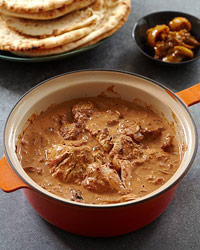
A highly aromatic spice blend, for which there are countless recipes, that is usually sprinkled over a dish near the end of cooking (unlike many spices and blends, which are tossed in the hot oil at the outset of cooking). Typically, it is a combination of warm spices like clove, cardamom, cinnamon, cumin, coriander and black pepper.
Recipe to Try: Chicken Tikka Masala
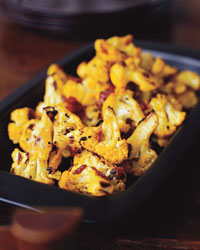
A rhizome (underground stem) that is prized for its medicinal and digestive qualities and its distinctive, sharp, invigorating flavor. Used extensively as an aromatic in Indian cuisine of every region, often mashed into a paste with garlic and added to hot oil at the outset of cooking.
Recipe to Try: Turmeric-Ginger Cauliflower
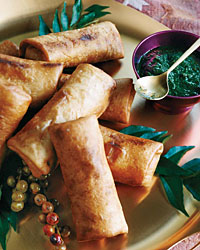
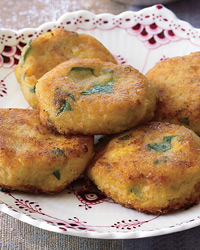
The aromatic leaves of a flowering herb, known for its distinctive cooling, sweet flavor. Used throughout India in a wide variety of dishes, including dals, pilaus, raitas, lassis and chutneys.
Recipe to Try: Cilantro-Flecked Corn Fritters with Chile-Mint Sauce
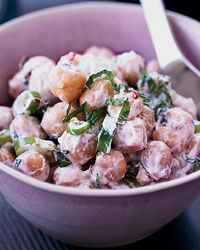
Brown mustard seeds, also sold as black mustard seeds, are used extensively as a seasoning throughout India, particularly in the South and in the Eastern state of Bengal. Generally, they are toasted in a dry pan, or tossed in hot oil until they pop, giving them a warm, nutty flavor. In Bengal, they are ground raw, which preserves their extremely sharp, sinus-tingling quality. Hulled and split, the seeds are called mustard dal and are often used as a pickling spice. For a milder flavor, it is appropriate to use yellow mustard seeds.
Recipe to Try: Indian-Spiced Chickpea Salad with Yogurt and Herbs
Sometimes called onion seeds because of their somewhat oniony flavor, these black, tear-shaped seeds are actually from the Nigella sativa plant, a relative of Queen Anne’s Lace. They are used in North Indian vegetable dishes, sprinkled on naan, as a primary pickling spice and as an essential ingredient in Bengali five-spice blend.
Recipe to Try: Fish with Squash and Indian Seed Pop
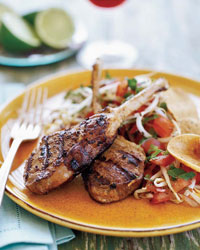
The seed of the fruit of an evergreen tree native to Indonesia, nutmeg is extremely aromatic, with a slightly sweet, peppery flavor. It is ground or grated and used to spice sweets throughout India, particularly in the North, and is sometimes used in small amounts in garam masala. (The hard, red, lacy covering enclosing the nutmeg is mace, ground and used as a separate spice with a mellower flavor.)
Recipe to Try: Luscious Tandoori Lamb Chops

A deep red powder made from ground sweet chiles; the peppers for Indian paprika (as opposed to Spanish or Hungarian) are grown in Kashmir. Paprika has a very subtle, mellow, sweet flavor, and is used primarily for coloring, most notably in dals and sauces from northern India.
Recipe to Try: Chicken Legs Marinated in Yogurt and Spices
The dried seeds of the poppy flowers. In India, only white poppy seeds are used for cooking, which are smaller than the European black seeds but have a similar, mellow, slightly nutty flavor. Toasting heightens the nuttiness. Whole, ground to a powder or ground with water into a paste, they are used throughout India, particularly in Northern and Bengali cooking, as a spice and as a thickener for sauces.
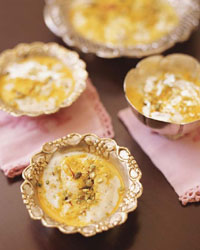
The dried, deep brownish-orange stigmas of the crocus flower (Corcus sativas), used as both a spice and a coloring agent. Indian saffron is grown in Kashmir. Used in small amounts, it imparts a sharp, slightly sweet flavor and heady aroma to sweet and savory dishes throughout India. Before adding to a dish, saffron is usually toasted, then soaked in hot milk or other liquid to release its flavors and color. It is the world’s most expensive spice, due to the large number of flowers needed to supply a small amount of saffron.
Recipe to Try: Semolina Pudding with Saffron and Nuts
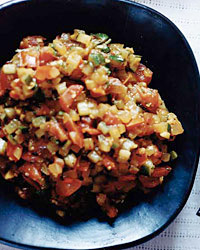
The seeds of the sesame bush, native to India. In Indian cooking, white sesame seeds are used extensively both whole and ground to a paste in spice blends, sweets and savory dishes; toasting enhances their nutty flavor.
Recipe to Try: Tomato-Cucumber Chutney
The star-shaped seedpod of a Chinese evergreen. Tastes strongly of licorice and is used in Indian cooking primarily to flavor to meat or other rich dishes.
Recipe to Try: Rice Pilaf with Pistachios and Prunes
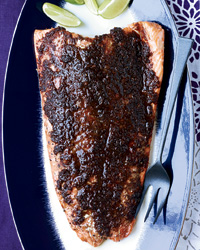
A paste made from the pulpy fruit of the tamarind tree, native to India. With a strong, distinctive, sweet-sour flavor, tamarind is used throughout India, particularly in the South, as a souring agent in curries, dals and chutneys, among many other dishes.
Recipe to Try: Slow-Roasted Salmon with Tamarind, Ginger and Chipotle

A rhizome (underground stem) of the Curuma longa, a plant native to India and related to ginger. While fresh turmeric is sometimes used in Indian cooking, more often the rhizome is boiled, dried and ground to a deep-yellow powder. Turmeric is an essential ingredient throughout India, used extensively in dals and meat, seafood and vegetable dishes, to impart its characteristic vibrant yellow color and mellow, warm flavor.
Recipe to Try: Turmeric-Ginger Cauliflower
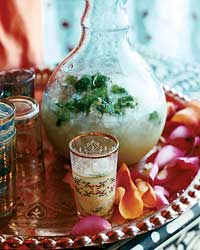
A typically round or oval, yellowish-green to green citrus fruit. An essential ingredient in all regions in India, limes are often made into pickles and chutney, and the sour, floral and slightly bitter juice is used to brighten savory and sweet dishes and beverages.
Recipe to Try: Sweet Lime-Ginger Rum Punch
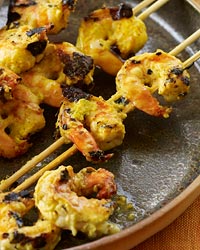
The stone fruit from several species of tropical fruiting trees from the genus Mangifera, native to India, where it is honored as the national fruit. The sweet, musky, deep orange Alphoso mango is the most well-known of the many variteies of Indian mangoes. Ripe mangoes are eaten raw or used in sweet or savory dishes and beverages. Tart, crisp unripe, or green, mangoes, are also used extensively throughout India in dals, chutneys, pickles and raitas and other dishes and beverages.
Recipe to Try: Mango Shrimp
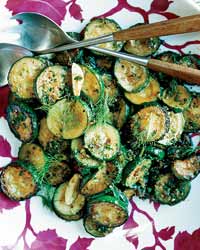
The seeds contained within the fruit of a small tree, the Punica granatum, a wild variety of pomegranate native to the foot hills of the Himalayas. In Indian cooking, the seeds are primarily used dried, at which point they are crunchy, slightly sticky and dark blackish-red in color. They are used whole, crushed or roasted and powdered in a variety of dishes from in Northern India, imparting a sweet-sour flavor and dark color.
Recipe to Try: Sautéed Zucchini with Ginger and Dill
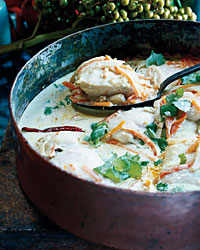
The fruits of various pepper plants, ranging in heat from mild to scorching. Most chiles start green and turn red when ripe. Both green and red chiles are used extensively in Indian cooking for their color, flavor and heat.
Recipe to Try: Mahimahi Coconut Curry Stew with Carrots and Fennel
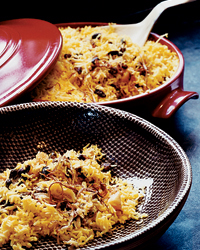
Nuts, especially peanuts, almonds, pistachios and cashews, are used in savory dishes like curries and pilaus throughout India and especially in the South, and are common additions to sweets, like milk fudge and rice pudding.
Recipe to Try: Pistachio-Apricot Biryani

The fully clarified butter used extensively throughout India, as both a condiment and a cooking oil. Butter is melted, the moisture cooked off and the milk solids separated and removed. Because ghee is free of all milk solids, it can be used for deep-frying and can be stored at room temperature.
Recipe to Try: Yogurt-Marinated Lamb Kebabs with Lemon Butter An mild-tasting fresh cheese made by acidulating hot milk (with lemon juice, vinegar or other food acid), thereby separating the curds from the whey. The curds are then strained and pressed to the desired texture. Paneer is both custardy and slightly chewy, holds its shape well and resists melting. Often it is cut into cubes and pan-fried, then added to a variety of other dishes, like stewed spinach (saag paneer) or peas (matter paneer).
Recipe to Try: Indian-Style Grilled Vegetables with Paneer

View the original article here
 Phoenix's famous pizzeria Bianco. Photo © John Hall photography.
Phoenix's famous pizzeria Bianco. Photo © John Hall photography.

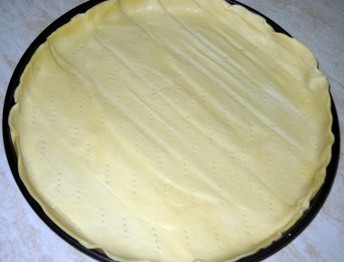 Stendiamo il rotolo di pasta brisée già pronta e con essa foderare uno stampo circolare, sul cui fondo avremo disposto un foglio di carta forno delle stesse dimensioni. Punzecchiamo la pasta brisée coi rebbi di una forchetta (operazione che aiuterà ad evitarne il rigonfiamento in cottura) e disponiamo sulla base anche un foglio di carta forno con dei fagioli secchi, che aiuteranno anch'essi, col loro peso, ad evitare la formazione di crepe. Inforniamo poi la base della quiche a 200° per una decina di minuti
Stendiamo il rotolo di pasta brisée già pronta e con essa foderare uno stampo circolare, sul cui fondo avremo disposto un foglio di carta forno delle stesse dimensioni. Punzecchiamo la pasta brisée coi rebbi di una forchetta (operazione che aiuterà ad evitarne il rigonfiamento in cottura) e disponiamo sulla base anche un foglio di carta forno con dei fagioli secchi, che aiuteranno anch'essi, col loro peso, ad evitare la formazione di crepe. Inforniamo poi la base della quiche a 200° per una decina di minuti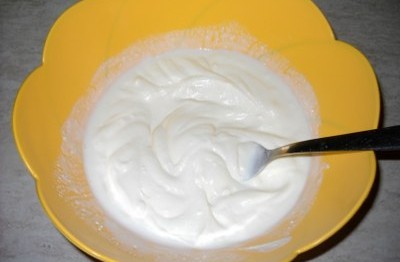 Nel frattempo, prepariamo la farcia, setacciando la ricotta in una terrina e ammorbidendola con il mezzo bicchiere di latte
Nel frattempo, prepariamo la farcia, setacciando la ricotta in una terrina e ammorbidendola con il mezzo bicchiere di latte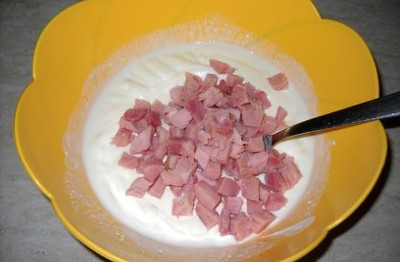 Tagliamo il prosciutto cotto a dadini e li amalgamiamo al composto di ricotta
Tagliamo il prosciutto cotto a dadini e li amalgamiamo al composto di ricotta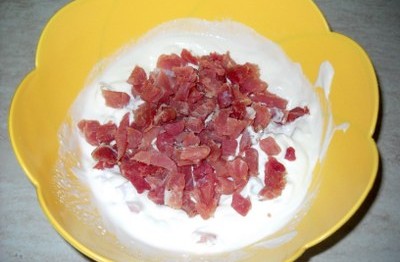 Riduciamo anche il prosciutto crudo a cubetti e incorporiamo anch'essi alla farcia. Mescoliamo per bene il tutto e completiamo con una macinata di pepe fresco
Riduciamo anche il prosciutto crudo a cubetti e incorporiamo anch'essi alla farcia. Mescoliamo per bene il tutto e completiamo con una macinata di pepe fresco Non appena la base della quiche si sarà rappresa, la sforniamo e vi spalmiamo uniformemente il composto di ricotta e salumi
Non appena la base della quiche si sarà rappresa, la sforniamo e vi spalmiamo uniformemente il composto di ricotta e salumi Cospargiamo con una dadolata di caciocavallo, che lasceremo di proposito in superficie affinché possa diventare croccante
Cospargiamo con una dadolata di caciocavallo, che lasceremo di proposito in superficie affinché possa diventare croccante Per finire, cospargiamo la quiche con un paio di cucchiai di semi di papavero
Per finire, cospargiamo la quiche con un paio di cucchiai di semi di papavero Inforniamo nuovamente la torta salata, completa ora di farcia, a 200° per altri 20 minuti (negli ultimi 5 con la funzione grill per dorare in superficie). Al termine della cottura, la sformiamo e la disponiamo in un piatto da portata
Inforniamo nuovamente la torta salata, completa ora di farcia, a 200° per altri 20 minuti (negli ultimi 5 con la funzione grill per dorare in superficie). Al termine della cottura, la sformiamo e la disponiamo in un piatto da portata ...ed eccone un bel trancetto fragrante e squisito!Ricette che potrebbero interessarti:
...ed eccone un bel trancetto fragrante e squisito!Ricette che potrebbero interessarti:
